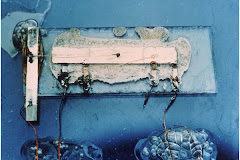Case Western Reserve University
Book Review
Derek Hughes, Culture and Sacrifice: Ritual Death in Literature and Opera, Cambridge University Press (Cambridge, 2007), 313 pp. + xi, illus. ISBN-13: 978-0521867337. $89.00 (USD).
1> Culture and Sacrifice: Ritual Death in Literature and Opera by Derek Hughes is a fascinating book. Broad in historical scope, it also reflects the depth of the author’s learning. Far from being either a superficial survey or a study weighed down by critical theory, Culture and Sacrifice delivers a flowing historical narrative that is grounded in philosophy and criticism. Hughes sets out to study the place of sacrifice, broadly understood as “the literal, ritual, religious sacrifice of a human victim” (2) in literature and opera. The book is a pleasure to read and, upon completing it, one feels compelled to turn back to works that the author discusses and ideas that he has explored.
2> Hughes has divided his subject into fifteen chapters arranged historically to cover the entire history of sacrifice. The opening chapter, “Human Sacrifice, ancient and modern,” introduces the reader to the topic, “literary works in which ritual human sacrifice is performed, or narrowly averted, or used as a powerful and deliberate symbol” (2). Hughes explains that he included music theater in his study because of the impact composers like Wagner have had on writers. Conversely, while the volume has nineteen illustrations, it includes little discussion of the visual arts. Hughes introduces his thesis that in the history of sacrifice a “relationship between sacrifice and systems of calculation or measurement” develops so that one can discern “profound psychological or symbolic affinities between the quid pro quo status of the sacrificial transaction and the equivalences established in systems of measurement, or in mathematical calculation, or in the determination of exchange value in the marketplace” (6). Chapter Two, “Greece,” is essential in Hughes’s book, for sacrifice first enters western literature with Homer and Greek tragedy. Hughes finds in Greek poetry and drama archetypes for later portrayals of sacrifice. Euripides’s two Iphigenia plays and The Bacchae are the key texts that he deals with at some length to prepare readers for later versions and variations.
3> Chapter Three, “Virgil to Augustine,” is a short chapter on sacrifice in the Roman world. Hughes looks at the Aeneid, viewing the sacrifice of Palinurus to Neptune (not a ritual sacrifice, incidentally) in Book Five as paradigmatic of Virgil’s vision of history in which empire pays the cost of one life for many. Hughes also studies sacrifice in the Latin writings of the Church Fathers, noting surprisingly that early Christianity did not define the Crucifixion in relation to human sacrifice. In Chapter Four, “The discovery of America,” Hughes pursues the theme of sacrifice and calculation in the history of the Spanish encounters with the Aztecs. Hughes generously cites passages from Spanish writers such as López de Gómara and Bernal Díaz de Castillo who saw human sacrifice in the New World. Hughes’s account of Spanish reflections on Amerindian sacrificial ritual leads him to survey the influence of these writings on European poets. Hughes claims that the civilizing mission of the Christian crusaders and explorers, combined with the continued influence of Virgil’s Aeneid, profoundly influenced the writing of epic during the Renaissance among writers such as Tasso and Milton.
4> In Chapter Five, “Shakespeare and the economics of sacrifice,” Hughes considers Titus Andronicus, a play which reverses the narrative of the Aeneid in that it begins – as the Aeneid had ended – with victory and sacrifice. Commenting briefly on Othello and King Lear, which use cannibalism as a metaphor, and Othello and Julius Caesar, in which characters “attach a sacrificial significance to the murders they commit” (74 – 75), Hughes then turns to The Merchant of Venice, a play which enables him to return to his interest in the relationship between monetary transaction and human sacrifice. Hughes’s Chapter Six, “Britain and America: Dryden, Behn, and Defoe,” is perhaps one of the most complex in the book. Hughes reads sacrifice against the age of discovery while noting the “immense change in the technology and cultural dominance of calculation” (83) that began in the seventeenth century. In Chapter Seven, “Lieto Fine: Baroque and Enlightenment Sacrifice,” Hughes documents the popularity during the seventeenth and eighteenth centuries of drama and opera on the theme of sacrifice, especially averted sacrifice. While versions of Iphigenia in Aulis began to appear during this period, so, too, did versions of Iphigenia in Tauris, a work in which sacrifice is averted. Likewise, Metastasio’s libretto Demoföonte (1733), which concerns the abolition of virgin sacrifice in Thrace, became immensely popular. Hughes observes that the theme of averted sacrifice became a way of reflecting on the cruelty inherent in the religion and government of the ancien régime or, conversely, became a way of paying tribute to enlightened rulers, such as Frederick II of Prussia, who had abolished torture and diminished the use of the death penalty.
5> In Chapter Eight, “The French Revolution to Napoleon,” Hughes identifies a change in the way writers used the theme of sacrifice. Hughes reads Sade’s depiction of sexual violence as a form of sacrifice and Goethe’s “Die Braut von Korinth” (1797) as a kind of pagan vampire narrative that initiates a trend in which sacrifice becomes internal and psychological. Additionally, Hughes reviews plays by Schiller and Kleist, noting especially parallels with Euripides’s The Bacchae. Chapter Nine, “The secularization of sacrifice,” is another transitional chapter. Hughes sketches the wide range of views on sacrifice during the nineteenth century, commenting especially on the European abhorrence of surviving sacrificial customs such as the Indian sati. He notices, in fact, a separation of religion from sacrifice in the nineteenth-century European consciousness. Chapter Ten, “Gothic sacrifice,” examines sacrifice in Romantic-era works. This engaging chapter deals provocatively with works by Mary Shelley, E.T.A. Hoffmann, and Carl Maria von Weber, among others. Hughes observes a shift as dramatists, librettists, and novelists alike began to explore the psychology of the one who sacrifices and the one who is sacrificed.
6> In Chapter Eleven, “Wagner,” Hughes considers the importance of sacrifice in the works of Richard Wagner. He argues that Wagner changed the Romantic paradigms which had contrasted damnation and redemption. Instead, Wagner’s works contrast the male and the female, and emphasize the sacrifice, especially self-sacrifice, of the woman. Hughes argues that while Wagnerian opera explores the individual and social development of man, female self-sacrifice permits a further stage of human development. Chapter Twelve, “The second coming of Dionysus,” deals with the reinstatement of Dionysus and the Dionysian in the imagination of writers during the nineteenth and twentieth centuries. Hughes considers Dickens’s novel A Tale of Two Cities and Stoker’s Dracula as works that anticipate renewed interest in the Dionysian. Hughes also examines three non-fiction works that reintroduce Dionysus and ideas about primitive religion into European consciousness: Nietzsche’s The Birth of Tragedy, Frazer’s The Golden Bough, and Freud’s Totem and Taboo. In Chapter Thirteen, ”Pentheus 1913,” Hughes demonstrates the lasting effects of the rediscovery of Dionysus and primitive ritual by Nietzsche, Frazer, and Freud on twentieth-century art and culture. Hughes deals chiefly with Robert Musil’s unfinished novel The Man without Qualities and Thomas Mann’s The Magic Mountain, a work that Hughes refers to as “the greatest of the twentieth-century responses to The Bacchae” (230).
7> Hughes continues his investigation of sacrifice in early twentieth-century fiction and music in Chapter Fourteen, “Sparagmos.” Chapter Fifteen, “Hitler and after,” ambitiously aims to follow the theme of sacrifice into the twenty-first century with a look at everything from Thomas Mann’s Doctor Faustus (1947) to Margaret Atwood’s The Blind Assassin (2000). Hughes concludes his study of sacrifice with the observation that “[r]itual sacrifice has become a metonymy for all transactions in which life is the currency” (274). He notes that archetypes of sacrifice continue to intrigue, and he speculates that writers and artists will continue to use them to represent perpetual questions about the value of life (274).
8> Culture and Sacrifice is not a book for specialists. Those seeking a narrow report on sacrifice in any one period will be disappointed. The sections on prehistoric and early historical sacrifice depend on the work of classicists like Burkert or theorists like Girard. The chapters on sacrifice in Greece and Rome are well-researched and informative, but not groundbreaking. In contrast, the chapters that deal with the Early Modern World frame the questions about sacrifice in a thought-provoking way. Hughes points out that the Europeans who encountered Native American sacrifice were forced to re-examine their own understanding of sacrifice in religion and of violence in Europe. Likewise, the chapters on the Enlightenment, Romanticism, and Modernity offer provocative new readings of numerous texts and musical works that are fundamental in the Western Tradition.
9> Culture and Sacrifice is not, however, a book for a novice in the humanities. While Hughes summarizes plot essentials, he writes for the well-read person who accepts the idea of a connected, linear world view of history, and who has some knowledge of the history of politics, economics, civilization, world literature, philosophy, theater history, music history, and art history. For this reader, the sophisticated generalist, this book will be a delight, encouraging new ways of looking at Great Books, Great Ideas in Western Civilization, and new ways of listening to some of the great operas in the world repertoire.
_____
Timothy Wutrich teaches in the Department of Classics at Case Western Reserve University in Cleveland, Ohio. His teaching and research interests include Ancient Drama, Vergil, and the Classical Tradition. Dr. Wutrich is the author of the book Prometheus and Faust: the Promethean Revolt in Drama from Classical Antiquity to Goethe (Greenwood Press, 1995).
_____
APPOSITIONS: Studies in Renaissance / Early Modern Literature & Culture, http://appositions.blogspot.com/, ISSN: 1946-1992, Volume Two (2009): Dialogues & Exchanges













No comments:
Post a Comment